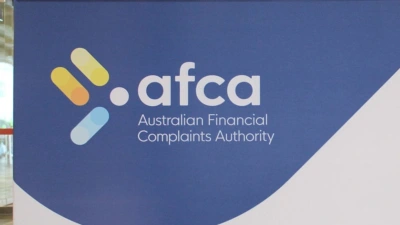Five takeaways from ASIC’s AFSL data



Money Management crunches the numbers on ASIC’s data on Australian financial services licence approvals and how it compares over the last three years.
Last week, ASIC shared its annual data on licensing and professional registration activities between July 2022 and June 2023. This is intended to increase transparency of ASIC’s activities and provide guidance to licensees about its decision making.
Warren Day, chief executive of ASIC, said: “We are continuing to make a number of improvements to ASIC’s licensing processes and systems. These include increased engagement with stakeholders during the application process, ongoing work to develop a new licensing portal and streamlining our workflow systems to make it easier for stakeholders to interact with ASIC.”
But how do this year’s statistics compare to previous ones?
Licence applications
The number of AFS or credit licence applications declined 13 per cent in the 2022–23 financial year from 1,469 to 1,272. This itself was a 21 per cent decline from 2020–21 when there had been 1,883 applications.
ASIC said the low number in 2022–23 was because there were “no licensing reforms that triggered a need for a new licence authorisation, as occurred last financial year”.
Licence approvals
In the 2022–23 financial year, 332 new AFSLs were approved and 509 AFSL variations were approved. This compared to 415 approvals and 763 variations approvals in 2021–22 and 339 approvals and 437 variations in 2020–21.
Since 2005, the average number of AFSL approvals has been 373 although it ranged from as high as 764 in 2017 to as low as 285 in 2009.
Prior to 2005, there were a whopping 3,255 application approvals in 2004, including 809 financial advice licensees, which was attributed to the introduction of the Financial Services Reform Act 2001.
A spokesperson for ASIC said: “The FSR amendments to the Corporations Act 2001 introduced a single licensing regime for financial advice and dealings in relation to financial products. An entity that operates a financial services business must hold an Australian financial services (AFS) licence or be authorised by a licensee.
“For two years up until 11 March 2004, those who met basic legislative criteria could directly replace their old licence (Securities Dealers/Investment Advisers) with a new licence, a process called streamlining. Unlike streamlined applicants, new applicants were subject to the full licensing processes set out in the amended Corporations Act.
“We had an influx of AFSL applications that were approved before the end of the transition period on 10 March 2004.”
Licence rejections
In FY22–23, 138 new AFSLs were rejected and 77 AFSL variations were rejected.
In 2021–22, there were 135 new AFSLs rejected and 142 variations rejected, and 123 new applications were rejected in 2020–21.
ASIC said applicants are offered opportunities to meet to discuss complex or novel applications early in the assessment process and engage with ASIC about substantive information requests that the applicant may not have not anticipated.
Licence cancellations and suspensions
One area that saw a definite increase in the most recent financial year was the number of AFSLs suspended, which stood at 24 in 2022–23. This was double the number of suspensions in the previous year (11) and in 2020–21 (12).
Among the suspensions, the AFS licence of Adelaide-based Lantern RE Ltd, the responsible entity of the registered management investment scheme, Fracprop Fund, was suspended until 29 May 2024. In March, ASIC suspended the licence of Global Pacific Solutions Group for three years for failing to act efficiently, honestly and fairly.
It was the same scenario for AFSL cancellations which stood at 45 in 2022-23 compared to 19 in 2021–22. However, there were 41 cancelled in 2020–21.
The number of licences that were cancelled on request ranged from 225 in 2020–21, 284 in 2021–22, then down to 260 in 2022–23.
Approval times
In 2022–23, three-quarters of new applications were finalised within 150 days, up from 73 per cent in the 2021–22 financial year and 74 per cent in the year prior. Some 88 per cent were finalised in 240 days, down from 91 per cent in both 2021–22 and 2020–21.
The length of time taken to assess an application depended on the quality of the application and any additional information requested, the complexity of an applicant’s business model and authorisations sought, any adverse intelligence about the applicant or its relevant personnel, and competing ASIC priorities, and the volume of applications under consideration.
Recommended for you
ASIC’s court case with Interprac is causing advisers to explore the possibility of self-licensing, according to My Dealer Services, as they observe the reputational damage it can bring to a practice.
AZ NGA has entered a strategic partnership with a Sydney advice firm with $600 million in assets under advice to support its succession plans and future growth.
With complaints on the rise and an expanded jurisdiction, the Australian Financial Complaints Authority is on the hunt for four C-suite roles, three of which are newly-created positions.
Ahead of the 1 January 2026 education deadline for advisers, ASIC has issued its ‘final warning’ to the industry, reporting that more than 2,300 relevant providers could be on their way out.











